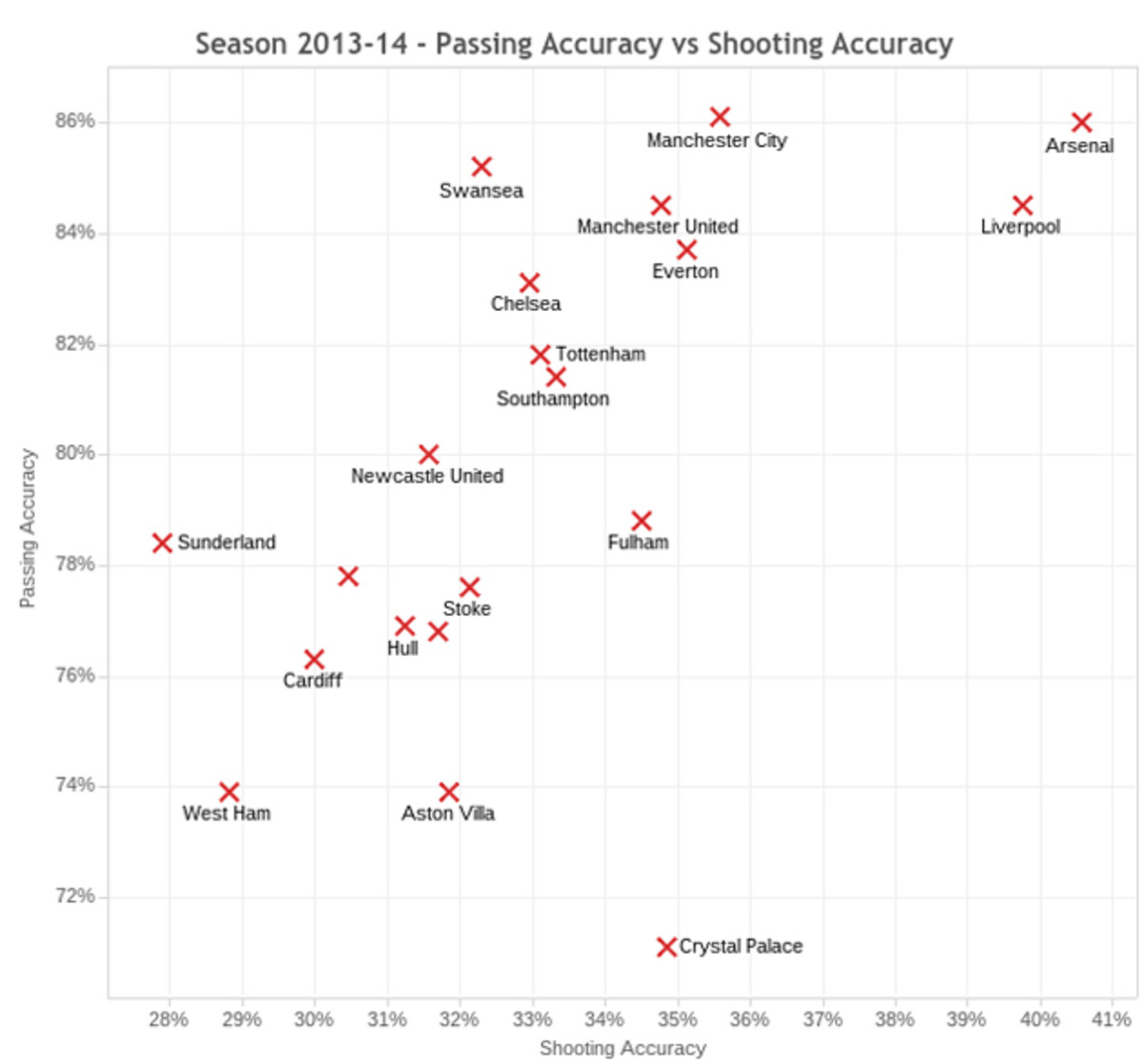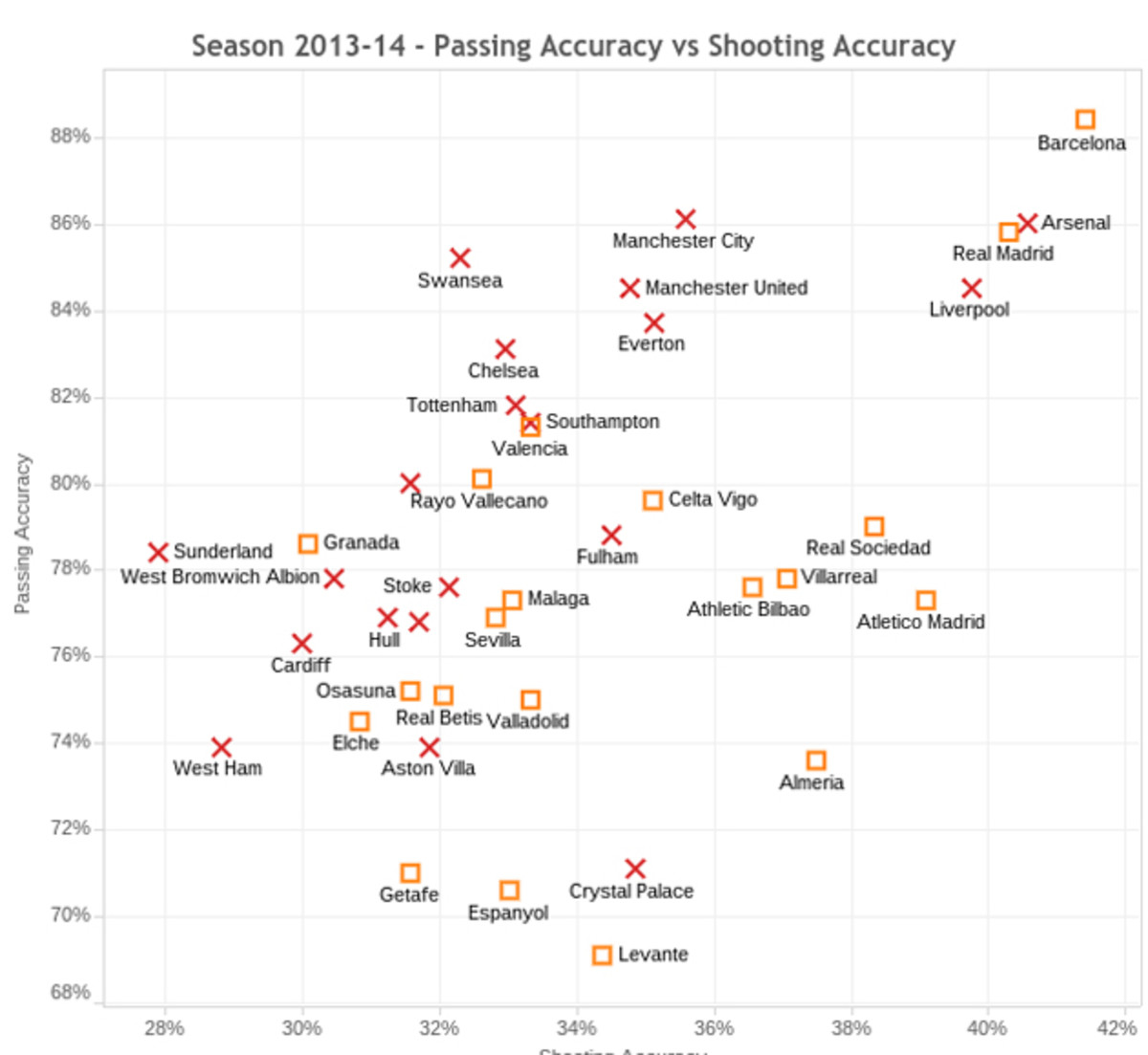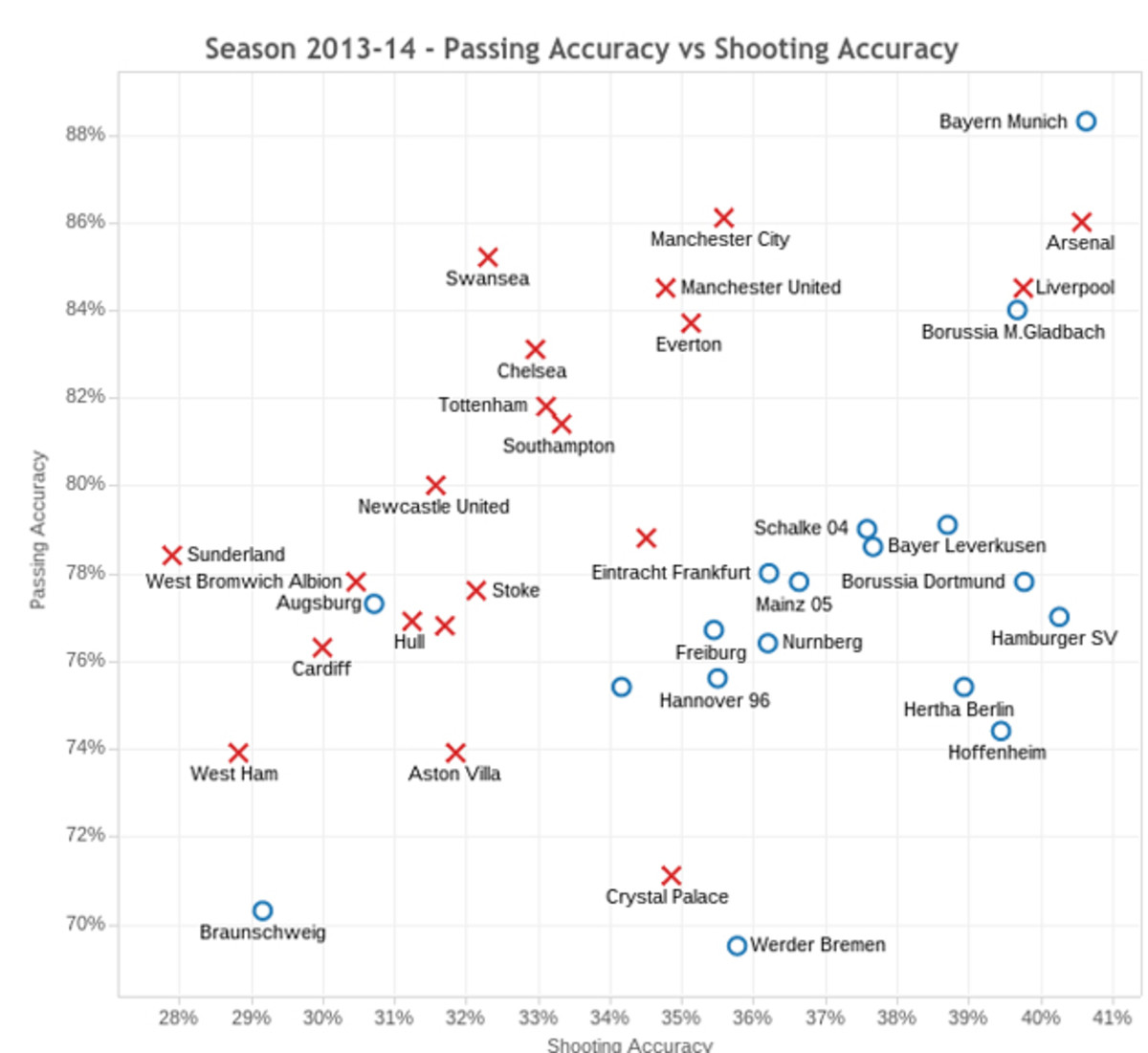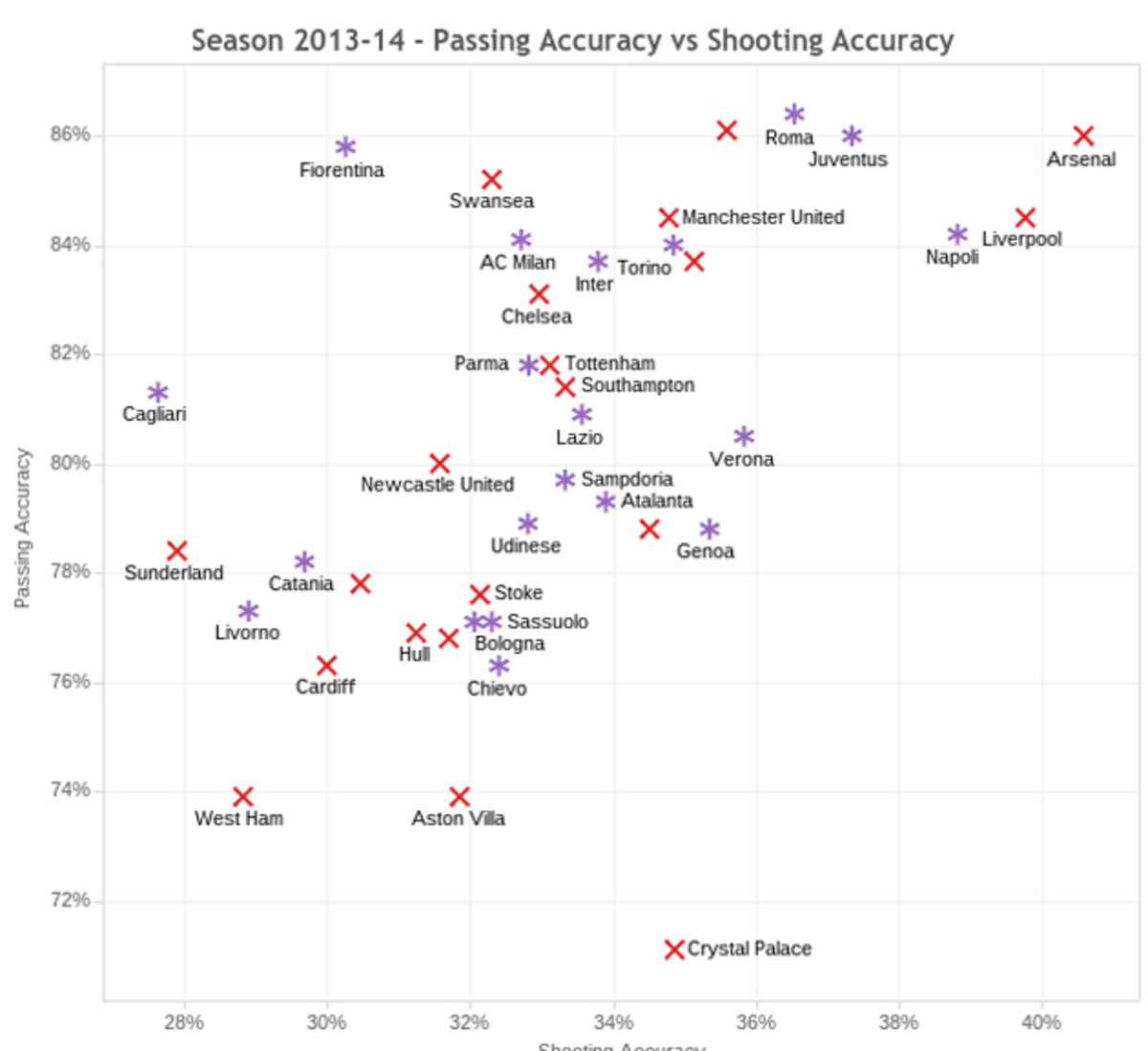EPL's star power has waned, but stats show league still stacks up with best

The style of play in the Premier League is one of the major factors in its global appeal, and certainly its rise as a powerful U.S. domestic TV property. Billed as faster, more physical and competitively deeper than the other elite European leagues, there's no shortage of weekly drama to consume.
But since Barcelona, then Real Madrid, and now Bayern Munich have re-risen to the absolute peak of European club soccer, there has been more discussion as to whether what we as Americans are consuming in greater and greater amounts from our ancestral cousins is actually the best soccer product available.
That debate slants heavily depending upon what you value, but there is considerable data that suggests the Prem indeed is the best brand of soccer, and also a different style of soccer than what its general rep suggests.
Now, the current version of the league is far from perfect. Last week's column went into painful detail about the depths of defensive despair in the league this season, with a lack of competent center backs and defensive midfielders leading to streams of goals against some of the biggest clubs. More goals can be exciting, but not necessarily when they're being conceded so often in the amateur fashion we're seeing so far this campaign.
• BERLIN: Gulf in class evident between Premier League's top and bottom
There's also no denying there has been a massive talent drain of elite talent from the Prem in the last few seasons. Cristiano Ronaldo left Manchester United for Real Madrid. Luis Suarez left Liverpool for Barcelona. Gareth Bale left Tottenham for Madrid.
In fact, of the top 20 players in this World's Top 50 list created prior to the season, only two of them currently play in England, and one of those two – Angel di Maria – was just purchased in this transfer window. Nine of the top 20 play for one of the two Spanish superpowers, and another five are on Bayern. Throw in big-spending Paris St. Germain (and Monaco) in Ligue 1, and there are plenty of non-English alternatives for the truly world-class.
We're seeing the impact of that player movement (albeit in small samples) at the absolute highest levels of the club sport. Last year's Chelsea was the only English club in the last two seasons to even make the Champions League semifinals after at least one Prem side had made the semis or better in nine of the 10 years before that.
In 2008, there was an all-English final between Chelsea and Manchester United. A year later, three of the four semifinalists were Premier League clubs. That era feels like ages ago, with matches like Dortmund's comprehensive 2-0 ousting of Arsenal in the first group-stage match this season the latest reminder that the rest of Europe has very much caught up – and surpassed – at the tops of their leagues.
That said, the Prem's reputation for speed and physicality of play in contrast to its European peers obfuscates the actual overall quality of soccer being played in England's top division.
The Opta stats chart at the bottom of this column from late in the 2012-13 season showed that the Prem as a whole was a better passing league than either the Bundesliga or La Liga, and was significantly more so in the final third, where attacking chances are created.
Despite summer optimism, signings, Arsenal's fate appears same as ever
That trend continued last season, as shown by the terrific interactive charts from statscreamer.com, which mapped passing accuracy vs. shooting accuracy for every team in the top five European leagues.
First, here's a look at the Premier League last season, where Liverpool and Arsenal had the most potent blends of passing and shooting accuracy, but half the league was at 80 percent pass completion or better. That said, the Reds and Gunners were the only two teams in the league with at least 36 percent shot accuracy.

Now look at the Prem against the two leagues it's most often compared to, La Liga and the Bundesliga.
In Spain, Barcelona is nearly off the grid with its possession-based excellence, and Real Madrid was in the Arsenal/Liverpool neighborhood, but there were only two other teams in the league last season (Valencia and Rayo Vallecano) that completed at least 80 percent of their passes. A lot more of the Spanish teams, including league champion Atletico Madrid, relied on a lower connection rate paired with more selective shooting (countering?) than their English peers. Seven Spanish teams were above 36 percent shooting accuracy.

That disparity is even more pronounced versus the Bundesliga, where a huge proportion of the league is of the lower possession/higher shot accuracy ilk, with only Bayern and surprise side BorussiaMoenchengladbach replicating the Arsenal/Liverpool combo, and no one else anywhere near where a lot of the best English sides ended up on the grid.

Weirdly, the league that most people think is the least like the Premier League, at least in terms of pace of play – Italy's Serie A – maps most closely in total, at least in these cross-categories.

Somewhat interestingly, five of the six teams across the four leagues that had less than 72 percent passing accuracy ended up surviving last season with relative comfort. Only Germany's Braunschweig, which combined inaccurate passing with worst-in-class shooting, found itself relegated to the second tier for this season.
• EPL STAR INJURIES: Arsenal's Ramsey | Manchester City's Nasri
Anyway, think about this the next time you tune into a Prem match. What often looks like mayhem, with crunching tackles and players often at full sprint, actually appears to be one of the most aesthetically pleasing versions of the sport being contested at Europe's highest levels. More passes with more connections is a nice way to get people to ignore more shots missing the target ... or the defensive blunders that have been leading to so many easy goals this season.
